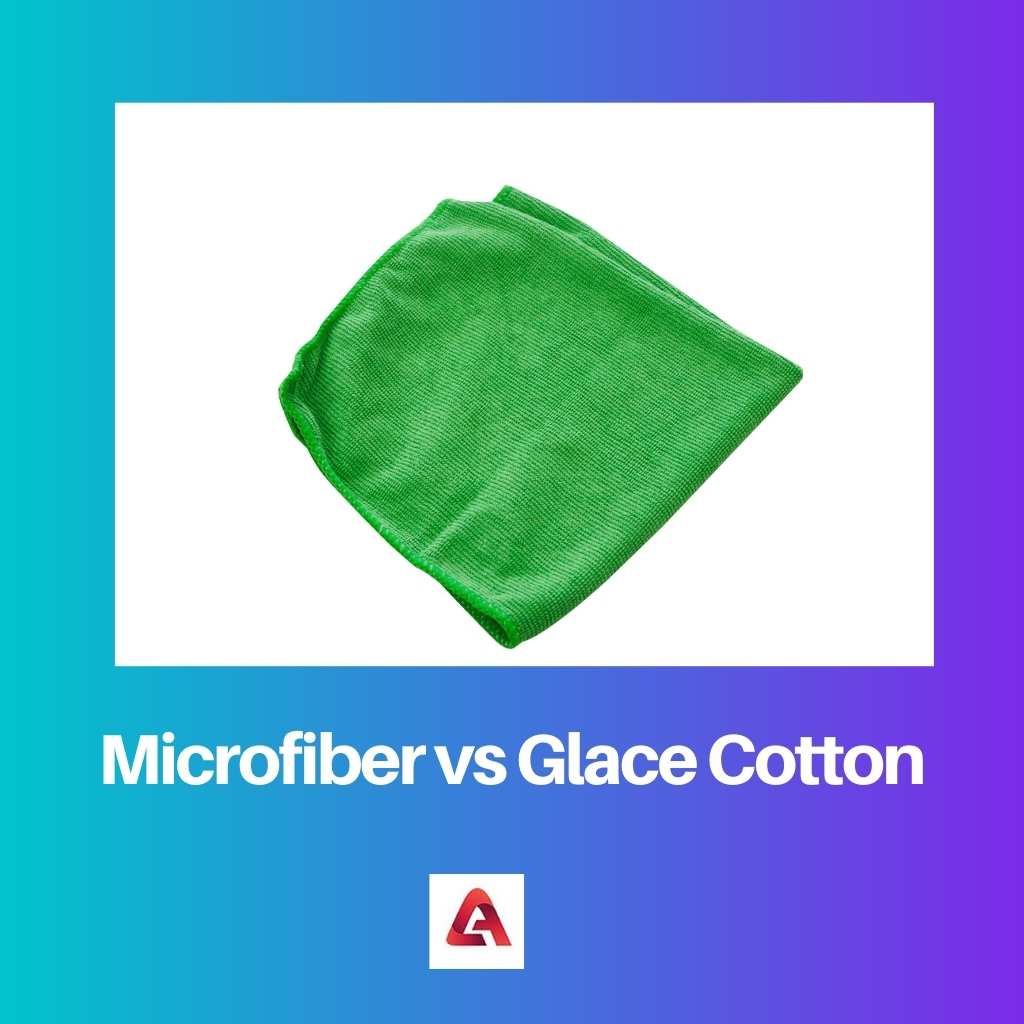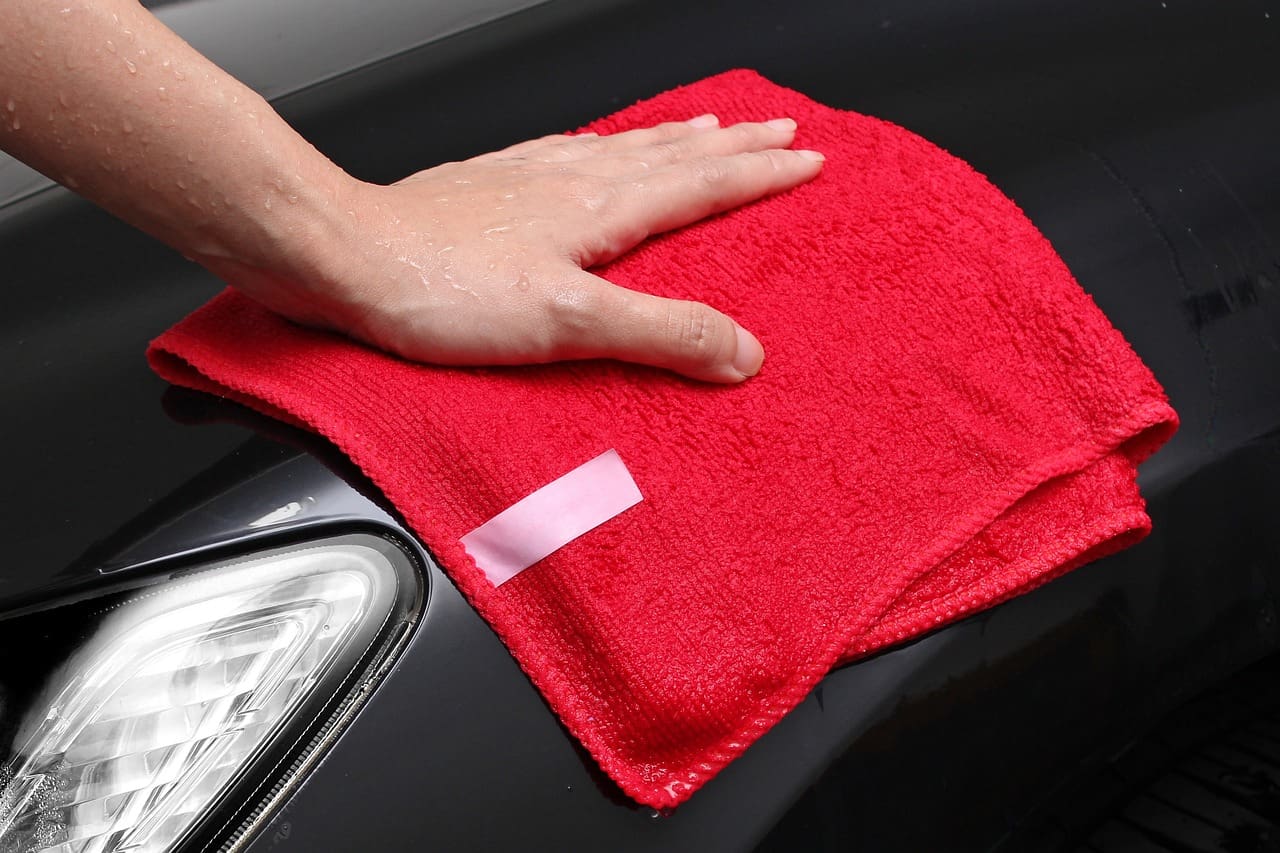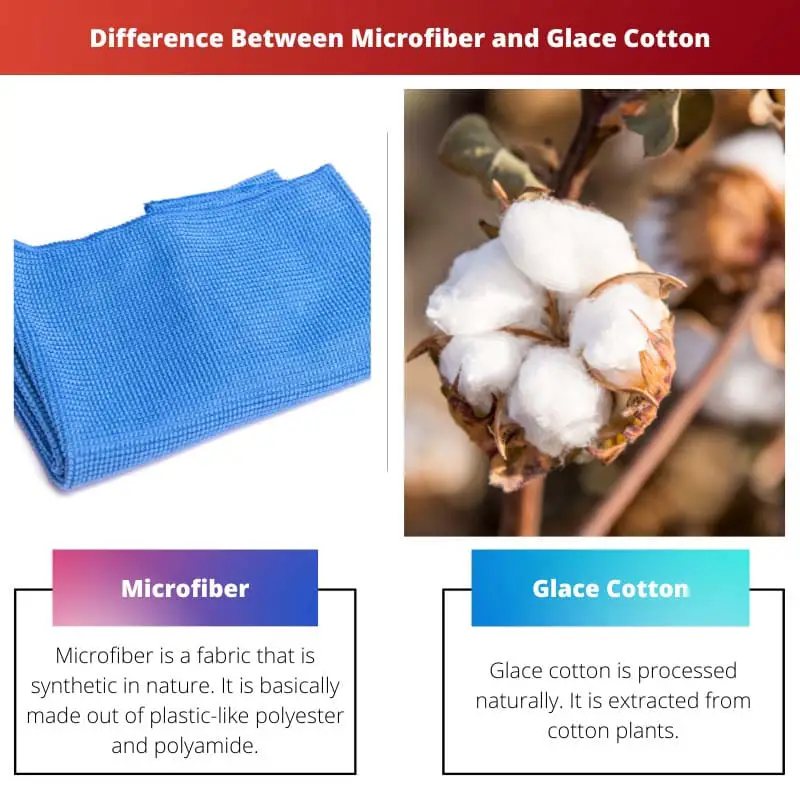The choice of fabric to make clothing or any other essential depends on many factors. Microfibers and glace cotton are two such fabrics where the differences must be weighed before using any of them.
Some may prefer microfibers due to their high durability and low cost. But some may go for cotton sheets because it is highly sustainable to nature.
Key Takeaways
- Microfiber is a synthetic material made from polyester, while glace cotton is a type of cotton treated with a special glaze finish to make it smooth and shiny.
- Microfiber is more durable and wrinkle-resistant than glace cotton, while glace cotton is more breathable and softer.
- Microfiber is used in bedding and upholstery, while glace cotton is commonly used for dressmaking and other clothing applications.
Microfiber vs Glace Cotton
Microfiber is a synthetic material that is made from ultra-fine fibers that are less than one denier in thickness. It is used to make cleaning cloths, athletic wears, etc. Glace cotton, is a natural material made from cotton. It is a high-quality, fabric that is soft, smooth, and lustrous.

Microfiber is a fabric that is synthetic in nature. It is basically made out of plastic-like polyester and polyamide. Rugs, bed sheets, mats, towels, quilts, napkins- these are a few elements made with microfiber.
It is extremely light and highly durable. The strands are very thin and can be easily washed.
Glace cotton is processed naturally. It is extracted from cotton plants. However, it goes through a chemical process to add a lustrous look to the fiber.
It is used both to make clothes and other essentials. It is more expensive than synthetic microfibers and needs extra care while handling.
Comparison Table
| Parameters of Comparison | Microfiber | Glace Cotton |
|---|---|---|
| Type | Microfiber is a synthetic fabric. | Glace Cotton is a natural fabric. |
| Price | Microfibers are less expensive than cotton. | Glace cotton is highly expensive. |
| Breathability | Microfiber is highly breathable but less than cotton. | Glace cotton is extremely breathable. |
| Look | Microfiber gives a soft look to the clothing. | Glace cotton is known for its shine and lustrous look. |
| Maintainance | Microfiber can be maintained easily as it is very strong and durable. | Glace cotton needs careful handling. |
What is Microfiber?
Microfiber is a fabric that is synthetic in nature and texture. It is made out of a combination of polyester and polyamide. The durability of this fiber is very high. It feels soft on the skin and can also highly absorb liquids, making it highly useful for various purposes.
Microfibers are very light in weight. The thickness of each and every strand of microfiber is also very small, as suggested by the name itself.
Essentials like towels, napkins, rags, moppers, mats, quilts, bedsheets, micro-chenille, waffle weave, etc., use microfiber as the main material. So there are many types of microfiber clothing used for cleaning, washing, wiping, dusting, etc.
There is a debate that is microfiber clouds are better than cotton ones. It actually depends on the type of clothing you’re using and also the purpose that it has been used for.
If you’re using a towel or a rag made of cotton, it would be extremely difficult for you to get it cleaned. Whereas microfiber rags or towels can be easily washed, and they are ideal for reusing to dust or wipe the floor or clean a table.
The absorbing power of microfiber is higher than cotton. It can absorb liquid about seven times its weight. So if you’re using a microfiber rag to clean the basin of your kitchen, you don’t have to think about how to dry it in monsoon or any other season.
Since microfibers are basically split strands, you can wash them even in a machine, and it won’t affect its longevity and leave any residue behind.

What is Glace Cotton?
Cotton is the most lightweight and preferred material for clothing. But glace cotton is a more polished version of cotton. It is done by waxing cotton threads with various chemical compounds so that it presents the appearance of the fabric with last year.
It is ideal for use in sewing and quilting projects.
As the name suggests, cotton is glazed in this process with chemicals, but it does not mean that it loses its strength and longevity. It actually becomes stronger, and it’s packed with amazing friction and features required for high-speed sewing.
Glace cotton is mainly used for making clothes like coats, bags, gloves, hats, shawls, and other essentials like tablecloths, cushion covers, bedsheets, etc.
Glace cotton is extremely comfortable and highly durable than the usual cotton fabric. It hardly weighs around 90 grams per meter. One can easily breathe with glace cotton clothing.
Because of the beautiful shine glace cotton offers, it is highly preferred by clothing designers for making fashionable clothes.
Unlike microfibers, glaze cotton is a natural fabric. It does not require much effort to maintain this fabric. It is highly sustainable and does not harm your well-being.
However, since it’s very delicate and soft, if washed in a washing machine continuously, its strands may get weaker. So you need to take a bit of extra care while handling glace cotton clothing.
Main Differences Between Microfiber and Glace Cotton
- Microfibers are not cultivated naturally. But glace cotton is a natural fiber.
- Microfiber fabric is highly breathable but less than glace cotton. On the other hand, glace cotton it’s absolutely ideal for clothing meant for summer as its breathability level is the highest of all fabrics.
- Microfibers do not have a shiny texture. But because glace cotton is treated with chemicals, it presents a lustrous look that is extremely attractive.
- Microfibers are inexpensive. But glace cotton is more expensive than microfiber clothes or sheets.
- Microfiber-made clothing may not be suitable for sensitive skin. But glace cotton clothing is suitable for a sensitive body.




